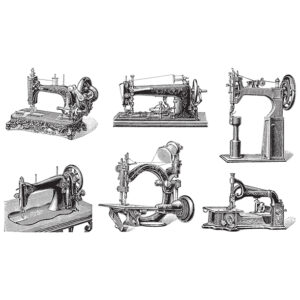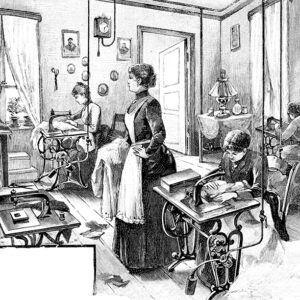 The sewing machine was invented in the early 1800’s by an Englishman named Thomas Saint. He was a cabinet maker who was looking for a way to make his job easier. He started experimenting with different types of machines that could stitch fabric together. After several years of experimentation, he finally came up with a machine that could stitch fabric together with a needle and thread. Many inventors in the US and Europe worked on improvements to sewing machines throughout the 19th century.
The sewing machine was invented in the early 1800’s by an Englishman named Thomas Saint. He was a cabinet maker who was looking for a way to make his job easier. He started experimenting with different types of machines that could stitch fabric together. After several years of experimentation, he finally came up with a machine that could stitch fabric together with a needle and thread. Many inventors in the US and Europe worked on improvements to sewing machines throughout the 19th century.
Barthelemy Thimonnier worked in France and received a patent for his sewing machine invention in 1830. His patent was for a machine that used a hooked needle and one thread to form a chain stitch. This chain stitch could be unfastened without pulling on the fabric or breaking it. Using this technique his device was able to mass produce uniforms for the French army. However, French tailors who were making the clothes were unhappy with this new technology as it was perceived as stealing their jobs. In 1831 a mob of angry tailors burned down Thimonnier’s factory and sabotaged his efforts. His working machines were destroyed, and he never got a chance to sell his invention.
Elias Howe was born in 1819 on a farm near Spencer, Massachusetts where his father had a gristmill and sawmill. He grew up in the farming community of New England and learned the machinist trade at an early age. Later, he moved to Boston and found work in the shop of Ari Davis who was making mariner’s tools and scientific equipment. It was there that he heard about the idea for a sewing machine. Howe spent five years working on his sewing machine innovation, attempting to perfect it. When completed, he applied for and was granted US Patent No. 4,750 for Improvements to the Sewing Machine for the lockstitch sewing machine on May 27, 1846. His discovery was to form the eye of the needle adjacent to the pointed tip so that two threads could be locked by the reciprocal movement of the needle. A traditional hand sewing needle has the eye near the top, but on a lockstitch sewing machine things work much better with the eye near the point. The inspiration for changing the location of the eye on the needle supposedly came to him in a dream. His efforts were rewarded with royalty payments for every machine that used his design.
innovation, attempting to perfect it. When completed, he applied for and was granted US Patent No. 4,750 for Improvements to the Sewing Machine for the lockstitch sewing machine on May 27, 1846. His discovery was to form the eye of the needle adjacent to the pointed tip so that two threads could be locked by the reciprocal movement of the needle. A traditional hand sewing needle has the eye near the top, but on a lockstitch sewing machine things work much better with the eye near the point. The inspiration for changing the location of the eye on the needle supposedly came to him in a dream. His efforts were rewarded with royalty payments for every machine that used his design.
Isaac Singer, another American inventor, was the first man to bring mechanized garment manufacture into widespread use. His innovation had a significant impact on social and economic development in the USA and England. During the 1850’s, Singer worked with the Lerow and Blodgett Company in Boston to improve the sewing machine. The machine had a presser foot that fed the fabric and was designed to cause less thread breakage. Singer arranged the mechanism so that the needle would move “up and down” instead of “sideways” and was powered by a foot treadle and not a hand crank. As a result, it could sew 900 stitches per minute, which was four times as fast as an experienced seamstress’s could achieve by hand stitching the garment. His novel machine was also the first to allow continuous stitching and curved stitches.
 The sewing machine has had a huge impact on the fashion industry. Before the sewing machines clothes were made by hand – a very time-consuming process. With the automation provided by sewing machines clothes could be made much faster, to a consistent design and size, with much less effort. This led to fashion design as a profession. Sewing machines also changed the way people thought about clothing. Clothes had been traditionally viewed as basically utilitarian items. With the advent of the sewing machine, clothes could become an expression of personal style and fashion that crossed or even extinguished social boundaries.
The sewing machine has had a huge impact on the fashion industry. Before the sewing machines clothes were made by hand – a very time-consuming process. With the automation provided by sewing machines clothes could be made much faster, to a consistent design and size, with much less effort. This led to fashion design as a profession. Sewing machines also changed the way people thought about clothing. Clothes had been traditionally viewed as basically utilitarian items. With the advent of the sewing machine, clothes could become an expression of personal style and fashion that crossed or even extinguished social boundaries.
